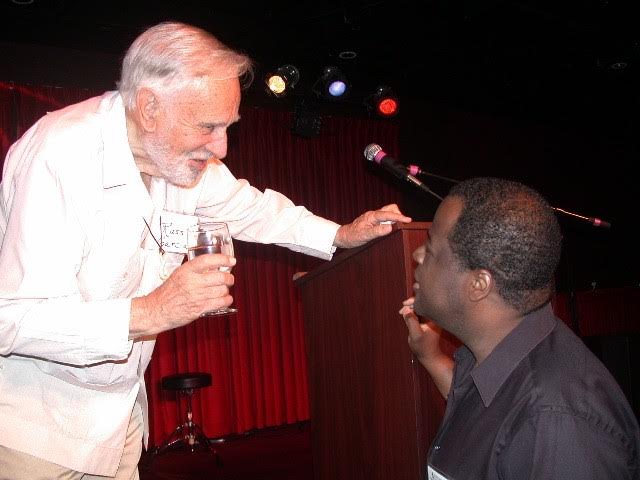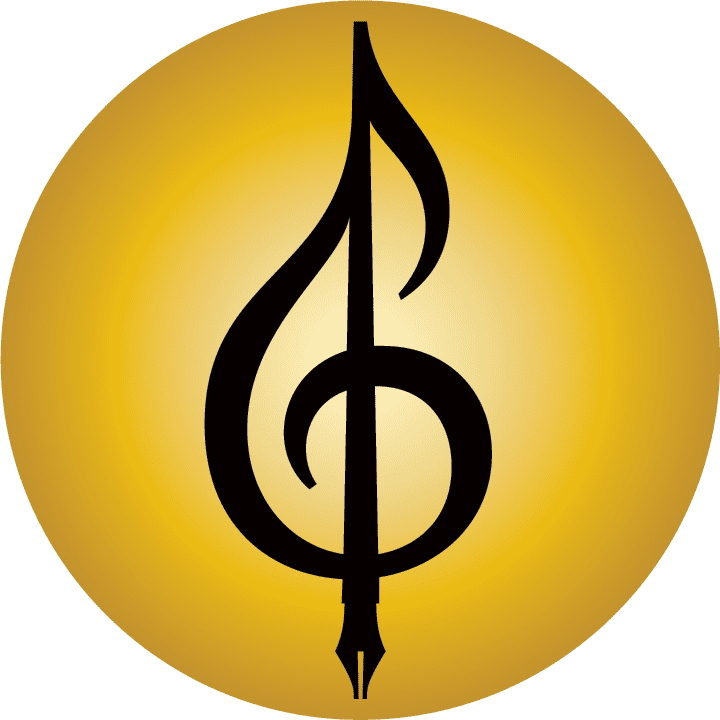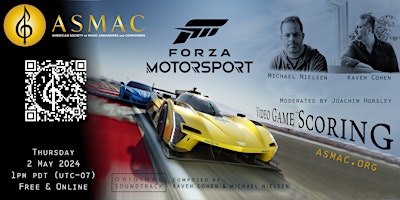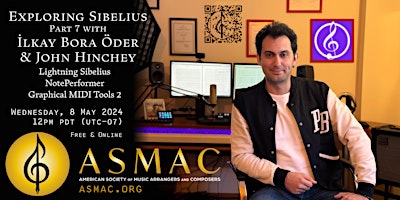LEGENDARY ARRANGER RUSS GARCIA SPEAKS AT ASMAC’S JUNE LUNCHEON
Announced as the ASMAC guest speaker for June, Rickey Minor from “American Idol” was unable to attend. So who do you ask to take his place at the last minute? Well, at the ASMAC events, everyone in the audience has amazing and entertaining tales to tell about their careers in the music business. How lucky however that the legendary arranger Russ Garcia was in town and was willing to fit the bill. Trumpeter, bandleader, conductor, composer, arranger, songwriter, Russ Garcia has done it all and has enjoyed every minute of it.
Garcia began his remarks from his repertoire of one-liners, “I’ve never worked a day in my life. I write music and they pay me for it.” Now 91 years and living in Kerikeri, New Zealand with his wife Gina, he said he dreads picking up the Overture these days because all his friends are mentioned as recently deceased and he fears that one day he’ll open up the “Overture” and find his own death notice there. “I worked with so many wonderful people in my life.” Garcia was witty, animated, unpretentious, yet a bit sardonic, as he regaled us with one story after another.
 Indeed, Russ Garcia, has worked with the best— Oscar Peterson, Ella Fitzgerald, Judy Garland, Frances Faye, Buddy de Franco, Anita O’Day, Sam Most, Stan Getz, and George Shearing. Garcia worked on more than 100 films. He was a Universal for 25 years and also worked for Disney, MGM, Warner Bros. and NBC. When asked how he moved to New Zealand, he said, “Have you ever heard the phrase, ‘Every man’s dream is to sail the South Seas?’” He went on to describe how he turned down an offer to score another picture, while in his 50s, and sailed off on his own boat. He said, “I always knew I could continue to write, but I wasn’t sure how long I would be able to sail.”
Indeed, Russ Garcia, has worked with the best— Oscar Peterson, Ella Fitzgerald, Judy Garland, Frances Faye, Buddy de Franco, Anita O’Day, Sam Most, Stan Getz, and George Shearing. Garcia worked on more than 100 films. He was a Universal for 25 years and also worked for Disney, MGM, Warner Bros. and NBC. When asked how he moved to New Zealand, he said, “Have you ever heard the phrase, ‘Every man’s dream is to sail the South Seas?’” He went on to describe how he turned down an offer to score another picture, while in his 50s, and sailed off on his own boat. He said, “I always knew I could continue to write, but I wasn’t sure how long I would be able to sail.”
Garcia worked with Charlie Chaplin on the score for “Limelight” (1952). He said that years later the Academy wanted to honor Chaplin and Chaplin said that Russ Garcia should be given credit for the work on that film as well. Chaplin played a melody on the piano “with one finger,” and Garcia did the rest?but of course, Chaplin was credited as the composer. The producers got Garcia’s name wrong and gave the honor to Larry Russell, who had no connection to that project.
Garcia got his start at Universal when Henry Mancini was looking for someone to do take downs of the Glenn Miller band of five tunes that were not found in the library that Miller’s wife maintained. Garcia said his musical creativity was as sharp as ever and he continues to work, but he has “given up his trapeze act.” Recently he has been arranging for singers and symphonies; he said many orchestras now invited pop stars to sing with them, to try to bring in the younger audience, and they needed charts. He is traveling constantly and loves every minute of it.
He talked about a couple of cult classics with which he had been connected. One was the Bethlehem Records two disc set on the Gershwins, with narrative, featuring Francis Fay, Mel Torme, among others.
Another “cult classic” for Garcia was his score for George Pal’s “The Time Machine” that involved all kinds of unusual sounds he recorded, including a musical saw, a gong, water and gelatin in a bowl, and “the weird woodwinds.” Released on Liberty Records, this soundtrack did quite well. There is a website for fanatical fans of “The Time Machine,” owned and managed by someone in Burbank and it offers blueprints for a time machine for purchase. Garcia said he was not sure if the device would work or not.
After World War II, he taught arranging at the now defunct Westlake School of Music in Hollywood. Most of the students were veterans, on the GI Bill, and they wrote charts for the class and heard them played by the end of the evening. There were musicians from Stan Kenton’s band and Les Brown’s band, including Bill Holman, Bob Graettinger and Gene Puerling. Garcia mimeographed a textbook in 1950 on a Gestetner [who remembers that equipment!] for that class and started to sell it. Two ads in “Downbeat” stimulated sales beyond what his wife could handle on her own, so they turned the book over to a publisher, Critereon Music Corporation. Then a second volume was written, and they are now published in six languages and available all over the world?”The Professional Arranger-Composer I and II.” Garcia said, “I wrote it in American. I’ve been told I should write it English. Actually, I wrote it in Bebop.”
Garcia said that he had fabulous students, including John Williams and Harry Betts.
He shared his memories of the early days of the Arrangers’ Society (now ASMAC), and recalled that in the 1940s they had dinner meetings with guest speakers Arnold Schonberg and Igor Stravinsky. Organizers included David Raksin, Arthur Morton, Lyn Murray and others. He recalled that the Arrangers’ Society also had a rehearsal orchestra that met once a month on Sunday mornings, so composers could try out new compositions. He recalled that they did a reading of Stravinsky’s “Circus Music.” He said one of the highlights was a three-hour lunch with Shostakovich at the Bellaire Hotel. Garcia told Shostakovich that he had learned a great deal by doing piano reductions of his symphonic scores. Now there is a good tip if you are studying composition.
About his earlier years, Garcia said he was born in Oakland, California, “because he wanted to be near his mother….” He went to Oakland Technical High School and there were a couple of great music teachers there, including French horn player Herman Chirp….who played with the San Francisco Symphony. The high school had two concert orchestras, a concert band, a marching band, and a jazz band. His teacher encouraged him to write for the high school groups, so he could hear his work immediately. He went to San Francisco State Teachers College and unfortunately the teachers could not write, play, or teach, so he went on the road with big bands, including Harry James, Horace Heidt, Al Donahue, and Stan Kenton. He often played fourth trumpet; they liked having him in the band because he could also do charts for them. Then he came to Los Angeles and studied with Edmund Ross, the teacher of choice of many film composers, Ernest Toch, Albert Coates, Ernest Krenek, and Mario Castelnuovo-Tedesco. He also studied with Sir Albert Coates who had a rehearsal symphony that read student pieces. Garcia worked in radio, becoming a staff arranger for NBC.
When World War II broke out, Garcia ended up in the Infantry. While waiting for requests to come in for him from the music and film units, the Normandy Invasion took place and he was sent into combat. He landed at Omaha Beach eight days after the first invasion. On “R & R,” he saw an old friend from San Francisco State, playing piano in a band, who immediately arranged for Garcia to go into a music unit. Unfortunately, Garcia, said, they did some horrible duties, like stacking up bodies and removal of debris, and very little music, but at least it kept him out of harm’s way.
He said that Ira would not agree to any changes in George’s music, not even key changes to fit the singers who starred in the film at MGM. Only Sammy Davis, Jr. sang his own song in the original key. Other singers had to be brought in to sing for the stars on the screen.
Garcia said he once worked on a big Las Vegas stage show with a huge production number using “Rhapsody in Blue.” Ira heard it and told them he denied permission to use the music, so Garcia wrote a “Rhapsody in Green” which permitted the exact same choreography for the dance portion, but a different tune.
By Jeannie Pool



